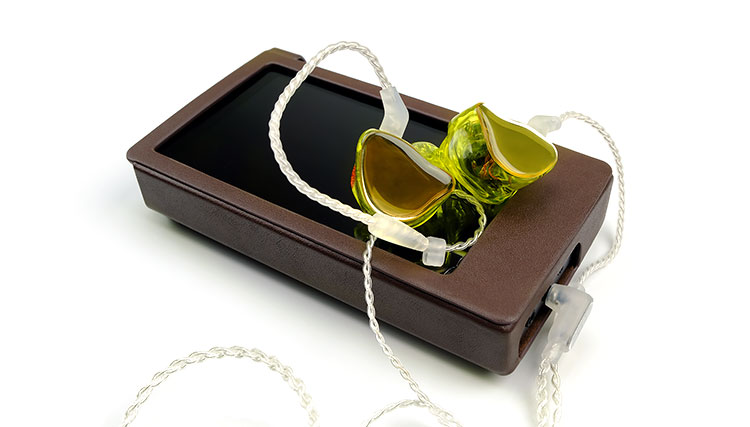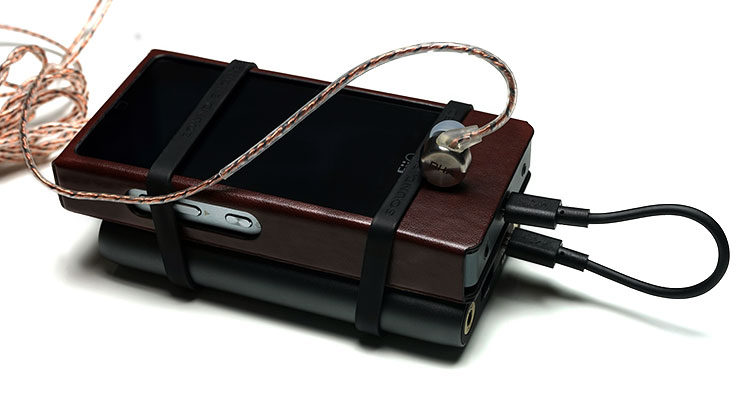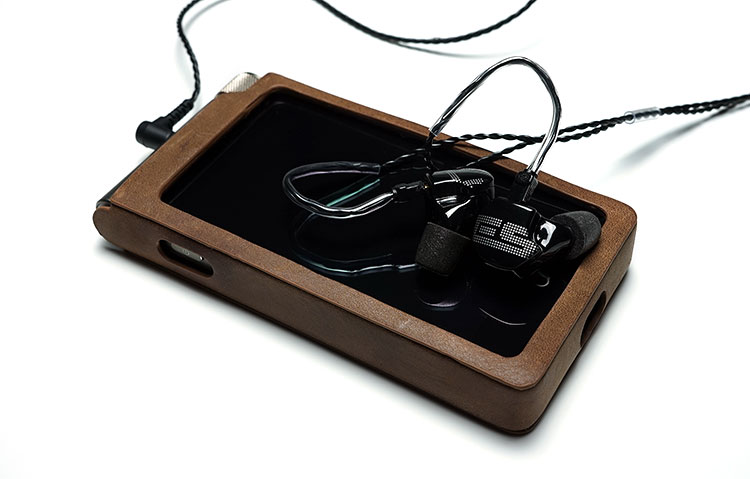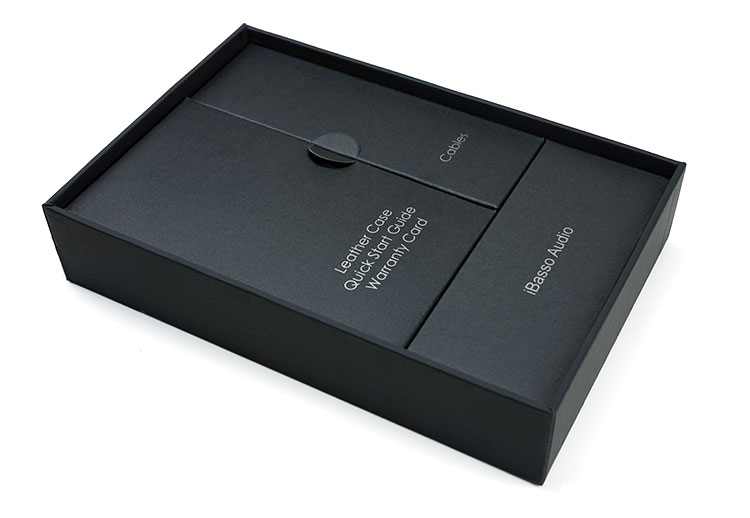Sound Impressions
Tonality & Presentation
The DX200, using Amp 1, has a neutral, balanced and very transparent tonality. It still technically has the Sabre house sound with an ear for a slightly analytical approach and definitely an excellent level of micro detail in the presentation.
The ES9028PRO Factor
However, unlike some ES9018 implementations, I did not find the new ES9028PRO config to have that harder edge in the upper mids and lower treble that can provide troublesome synergies with equally neutral sounding IEMs or headphones.
That is not to say that the ES9018 has an inherent glare, but rather the general feedback from engineers was that it is much hard to work with in terms of filtering and tuning than say the AK4490 Veritas chips are. The chances of ‘glare’ were much higher with the previous Sabre chips in poorly implemented or cheaper designs.
Timbre
The AMP 1 timbre is neutral and accurate in character. Rather than giving off a cooler or harder-edged tonal quality, it played quite smoothly for me, particularly in its attack. It is also very linear, perhaps even too linear at times but that is where your amp card choice will come into play.
Amp 1 it is quite linear, almost pulling back the bass response a touch to retain a high level of coherency. There is hardly a moment in the entire frequency response you could shout out and say that’s a boosted region, or that has too much sparkle, or that area seems recessed.
Clarity
Some might argue that this might bring to bear a rather “boring” presentation and true enough compared to the Hugo or the Mojo it is not quite as vivid or perhaps even as musical sounding. Nor will it inject some easy win coloration into the low end with some additional weight or a more forward vocal such as you will find on the Cayin DAPs.
What it will do however is give you clarity and great dynamics. It will offer excellent detail, tonal accuracy, and precise control making it a very versatile if somewhat revealing combination which should pair quite well with a wide range of IEMs and headphones.
Amp 2
Amp 2 has a little bit more of low-end bias and you will hear its presence more than the controlled balance of Amp 1. Amp 2 could best be described as having a slightly more musical tilt with more of sub-bass uptick than an impactful or warmed up mid-bass boost. Definitely, Amp 2’s fundamental harmonics with lower key instruments has more presence than Amp 1 yet without any loss of clarity. This is not a muddy presentation, just slightly more colored.
Mids and treble on the Amp 2 card are also slightly smoother and more rounded than the cleaner and more neutral sounding Amp 1 card. Treble a little more laid back which takes a touch of bite away compared to the Amp 1 card’s more forward treble response.
For those looking for a bit more of a planted feel and a richer note and didn’t get that from Amp 1’s more reference neutral sound then Amp 2 goes some way to answering that demand. If you want a bit more headroom and sparkle and preferred a linear low end then stick with Amp 1.
Matchability
Efficiency
Both amp cards have good noise control and excellent black backgrounds on all but the most sensitive IEMs such as the Andromeda and Jupiter from Campfire Audio. You will get a very tiny amount of background hiss but its very manageable. Beyond that, medium sensitivity IEMs such as the Vega, Savanna, AAw’s W900 CIEM all perform optimally in low gain at around 60 for the most sensitive and 85-90 for the least efficient.
Certainly, the noise levels are superior to the FiiO amp modules though I may give a very slight edge to the Opus#3 with sensitive IEMs but you have to compensate that with the fact the Opus#3 is not as powerful in either balanced or unbalanced output as the iBasso amp cards.
Power
Amp 1 has both single ended and a balanced output whereas Amp 2 has a single ended output only. Amp 1 is rated at 3Vrms for the single ended and line out which is double the Vrms rating of the X7 at 1.4. It is also slightly more powerful than the 2.5Vrms rating of the Opus#3. AM2 and AM3 modules of the X7 are closer in output ratings to the DX200 single ended whereas the FiiO AM5 module is more powerful single-ended.
The DX200 AMP 1 balanced rating of 6Vrms or 1.13W into 32 ohms is indeed quite powerful, much more so than the FiiO AM3 balanced output rating of 540mW into 32 ohms and the Opus#3 rating of just 3Vrms or slightly over 300mW. If you are rocking a 2.5mm TRRS connection on a medium efficiency IEM and beyond the DX200 will offer a much more dynamic presentation than its single ended output.
That increase in dynamics should give you a more vivid and immersive soundstage as well as a punchier low-end. IEMs such as the Campfire Audio Vega, which are known to scale quite well, sound a whole lot more convincing in balanced than unbalanced. CIEMs with dynamic hybrid configs such as the W900 also tightened up considerably and went from smooth to punchy and more engaging.
Select Comparisons
Opus#3
$849
OS
Depends on how you look at it. On one level the DX200 is more open than the Opus#3 with a full and unrestricted 2GB RAM Android OS, downloadable apps and a dedicated music app of its own (Mango) all splashed on a highly capable LCD screen. If you do not like Mango just download any one of a ton of other music apps and you are good to go. The Opus#3 is very limited in that sense with its walled Android and only 1GB of RAM which is hit and miss for the performance levels of the latest downloaded app versions.
On another level though Mango, the dedicated app and the dual boot alternative to open Android, is slower, buggier and at times more awkward to work with than the snappier Opus#3 OS. Notably, the DX200 has gone through several iterations of the screen responsiveness with it almost unusable at one point before the last firmware brought back the touch responsiveness. It does have a number of interesting options such as channel balanced and the digital filters but for me, the Mango app doesn’t feel as easy to work with as the Opus#3 skin is.
Technical
DAC
The ES028PRO Sabre chip is class leading in performance numbers and the Opus#3 Burr Brown chip is getting on in years despite its more than capable numbers. The Dx200 has 2 packed inside nevermind 1. Outside of the chip, the amping on the AMP 1 card is much more powerful with 6Vrms from the balanced output compared to just 3VRMS from the Opus#3 balanced out.
Noise
The DX200 also has a true line out though both do have SPDIF digital outputs. Both are excellent with noise and both handle sensitive IEMs really well, much better than FiiO’s X7 amp cards. The Opus#3 is on par with noise performance if not better which really pleased me.
Form Factor
The Opus#3 is the more hand friendly of the two DAPs with the DX200 looking rather large in comparison and it also weighs 20g more. Battery life is similar on both DAPs at around 8 hours though I suspect you could really shorten the DX200 battery life with a ton of apps and videos, much more so than the Opus#3.
Tonality
The DX200 is more neutral in its tonality and slightly more linear sounding across the board using Amp 1. Texture and detail have a slight edge, particularly in the lower mids where the Opus#3 has a slightly warmer fuller sound and a bit more of a mid-bass boost.
Treble on the DX200 is a bit brighter, more in line with a Sabre type delivery but it is still very clear and a little more articulate than the Opus#3 in the final octave. Instrumental timbre is a bit more neutral and accurate sounding than the warmer Opus#3.
Vocal positioning on both DAPs are similar but again the DX200 carries a little more detail and texture. Overall the Opus#3 loses out a bit on detail to the DX200 but it comes across as the slightly more forgiving of the two DAPs whereas the more neutral DX200 might expose a flaw or two in your source tracks given its heightened level of transparency.
Using Amp 2 I got a more musical signature with the DX200 with a planted weightier low end than the Opus#3 and a richer mid-range. Treble performance was a bit smoother and more relaxed and more in line with the Opus#3 presentation.
FiiO X7
$649 ($99 per amp module)
Technical
Like the DX200 the X7 is an open-ended Android platform (5.1) with a Sabre DAC implementation, (ES9018S). Neither comes with Google Play as standard, you do have to side load it. However, there are some plus and negative points when comparing the two.
Apps
FiiO has implemented their own marketplace with I guess what you can call a white-list of approved apps, about 27 in total ranging from music to streaming, video, and utilities like Swiftkey and WiFi Analyzer. iBasso have yet to release their own white list for the DX200 so you will have to sideload and install apks meaning it can be a bit of a hit and miss in terms of what works and what does not.
Tonality
Both have Sabre DAC’s and whilst the X7’s DAC is the full desktop version of the ES9018S it is getting a bit long in the tooth compared to the latest ES9028PRO dual implementation in the DX200. It doesn’t have the same level of dynamic range as the ES9028PRO and in general, with the amp modules, it is a little noisier than the DX200 implementation.
AM1
The X7 does have a wider range of tonal choices with no less than 5 amp card choices over the DX200’s 2 amp cards. That being said the DX200 is more resolving with a smoother more rounded natural tone to the cooler, slightly thinner and more digital sound of the X7.
AM2/5
AM2 and AM5 are closer to the sound of the AMP 2 card for the DX200 with greater power and more musical approach but they come at the cost of higher noise floors with IEMs and for me, the AMP2 card from iBasso is much quieter with a blacker background and better definition, particularly in the mids.
AM3
AM3 from FiiO closely resembles the AMP 1 card of iBasso with both unbalanced and balanced outputs but it is not as powerful in its balanced output as the AMP 1 cards 6Vrms rated output. Tonally the AM3 is a little bit flatter and cleaner than the AMP 2 card which has more low-end weight, a more resolving mid-range, and a smoother top end. It also sounds more dynamic than the AM3 and is less noisy with sensitive IEMs.
Cayin i5
$499 (Leather case $25 additional)
Technical
OS
Like the Dx200, the i5 is an Android build but more in line with the Opus#3 with a heavily skinned HibyMusic interpretation of their popular app as well as Android 5.1 as opposed to 6.0. It is not as open looking as the Dx200 but with the latest firmware, you do have access to Google Play services, unlike the DX200. This makes downloading apps a lot easier though do bear in mind the Cayin only has 1Gb of memory and not 2GB.
Power
The CPU on the i5 is good, it a quad-core Cortex A-7 processor, dual core GPU and an ARM 9 PMU but doesn;t quite match the 8 core CPU of the DX200. Both have WiFi and BT 4.0 but both do not have aptX as standard. Actually, only the FiiO X7 has that option out of the 4 DAPs tested.
Ports
Both have a USB-C port for USB DAC, charging and data transfer, however, the i5 is missing coaxial/optical dedicated SPDIF output ports which you can find on the DX200. You will instead have to use a USB-C to Coaxial cable which you can buy as an optional accessory from Cayin for that type of functionality.
No Balanced
The i5 is also missing a balanced output which is one of the main critiques of the i5 as its amp section is not swappable, unlike the DX200 and X7. Even comparing like for like though the i5 amp has less output power than the Dx200 Amp 1 and Amp 2 cards at 190mW+190mw (@32Ω) yet at the same time, it is a noisier amp for sensitive IEMs than the DX200.
Tonality
It is one of our favorite mid-fi DAPs in the office because of its easy to use UI, excellent musical tonality, and competitive price point. On paper, though it doesn’t seem like a fair fight but the AKM4990EQ is an aggressive musical little DAC that has won a lot of fans over and is very adaptable in terms of tonal pairings.
Compared to the DX200 the i5 does not convey the same level of micro detail and there is less texture and definition across the range. Treble on the i5 is also a little uneven sounding in comparison to the DX200’s very smooth and articulate control in Amp 1.
On the flipside, the i5 is more aggressive, more entertaining and more impactful, especially on the low-end and those looking for an immediate thrill might take to the i5’s fun ride. Amp 2 goes some way to correct that impression with its thicker and more planted low-end and smoother richer mid-range but it still not as aggressive.
That being said, the DX200 is the reference sound out of the two, even with Amp 2. The i5 is fun, a very enjoyable experience but the difference in detail and control is telling. Combined with the balanced output it will provide a more immersive and accurate presentation.
Our Verdict
The X5iii from FiiO was a good mid-price DAP benchmark for what we should be expecting from our DAPs in 2017. I actually think iBasso has done the same thing for flagship DAPs because if there was an award for a bill of materials and outstanding value, then the DX200 would get it in a heartbeat.
Specs
The specs on paper are off the hook, honestly superb. The DAC chip is easily the most advanced and probably the most expensive DAC chip in a DAP today. AKM has some new stuff floating around but the price point is nowhere near as high and the performance figures just not as impressive. Of course, this is all for nothing is poorly designed but the DX200 does indeed deliver for me on many levels.
Caveats
Its only caveats are the lack of Google Play integration, the shortish battery life, and the rather laggy performance of the Mango OS as of writing. I still prefer the Android app, it seems faster to use even if Mango OS is much faster to boot, and getting the full range of Android settings gives me power and choice at my fingertips. Android 5.1 would have been just fine also and perhaps even faster than Android 6 and less battery intensive. The lack of Google Play leaves app downloading and integration a bit more haphazard.
Tonal Progression
Tonally it is so much superior to the older ES9018 and much easier to listen to with a smooth, revealing, and very detailed presentation. Out of the box with Amp 1, the DX200 is very linear and perhaps too reference for some who want better impact. For that get Amp 2 with its more planted low-end and richer mids. Two very solid low noise cards that outperform the FiiO cards to date in terms of power and black backgrounds.
Overall
iBasso has chucked everything into this DAP and it’s a worthy 10th-anniversary celebration with a very competitive price. I am excited to see how further amp modules and firmware can add value to this system. I do not think iBasso will follow FiiO in terms of how they pitch their amp cards either, you have to put your thinking cap on to figure out which module will appeal to you the most but it is refreshing if perhaps a little nerdy. Perhaps nerdy is the benchmark for 2017.
iBasso DX200 Technical Specifications
- Dual SABRE ES9028PRO DAC Chips
- Bit for Bit Playback Support up to 32bit/384 kHz
- Support of Native DSD up to 512x
- XMOS USB Receiver with Thesycon USB Audio Driver, Easy to use USB DAC
- Dual Accusilicon Ultra Low Phase Noise Femtosecond Oscillators
- 4.2″ IPS Screen (768*1280) with Capacitive Touch Panel, Bonded by OCA
- Mini Optical Output and Mini Coaxial Output. – 8-core CPU. – 2GB LPDDR3. – 64G of Internal Memory. – 5G WiFi and Bluetooth4.0
- Patented User-Exchangeable AMP Card
- 150-Steps Digital Volume Control
- Audio Formats Supported: APE, FLAC,WAV, WMA, AAC, ALAC, AIFF, OGG, MP3, DFF, DSF, DXD.
- Support for M3U Playlist
- 4400mAh 3.8V Li-Polymer battery (Play time varies depends on volume, music type, and AMP card)
- Dimension 128.5mm*69mm*19.5mm. Weight 240g
2.5mm Balanced Output:
- Output voltage 6Vrms
- Frequency Response: 20Hz-20KHz -0.16dB
- Signal to Noise Ratio: 125dB
- Crosstalk: -122dB
- THD+N: < 0.0002%, -114dB (64Ω@3Vrms)
3.5mm Single-ended Output:
- Output voltage 3Vrms
- Frequency Response: 20Hz-20KHz -0.16dB
- Signal to Noise Ratio: 122dB
- Crosstalk: -118dB
- THD+N: < 0.00032%,-110dB (32Ω@1.8Vrms)
Lineout:
- Output voltage 3Vrms
- Frequency Response: 20Hz-20KHz -0.16dB
- Signal to Noise Ratio:122dB
- THD+N: < 0.00025%,-112dB
Amp 2 Card
3.5mm Phone out:
- Max Output: 3.2Vrms
- Frequency response: 20Hz-20KHz-0.ldB
- SN: 117dB
- THD+N:0.00056%,-105dB(32Ω@1.8Vrms),[email protected] without load.
- DNR: 117dB
- Crosstalk: -109dB
Line out:
- Frequency Response: 20Hz-20 KHz-0.ldB
- SN: 118dB
- THD+N :< 0.00018%, -115dB








